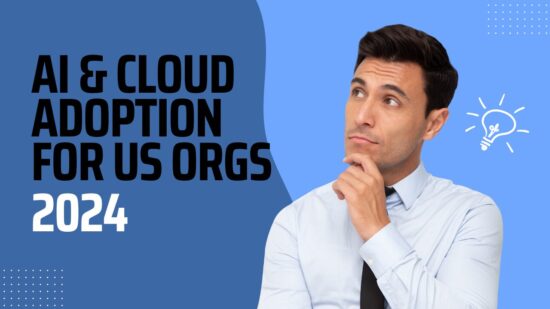Next-Generation ERP in a California Enterprise Technology Roadmap: Embracing Modern Solutions
As the enterprise technology landscape evolves, robust, adaptable, and efficient Enterprise Resource Planning (ERP) systems are more critical than ever. Next-Generation ERP solutions play a vital role in modern organizations seeking to streamline their operations, optimize business processes, and achieve better decision-making insights. In California, where the technology industry thrives and serves as a hub for innovation, implementing a suitable Next-Generation ERP system is central to a comprehensive enterprise technology roadmap.
Understanding Next-Generation ERP involves recognizing its capacity to integrate various organizational functions and adapt to emerging technologies while maintaining high flexibility and agility. California’s progressive technology landscape demands enterprises align their ERP systems with the state’s technology roadmap, ensuring compatibility with ongoing advancements. Such alignment strengthens an organization’s operational efficiency and benefits its overall competitiveness in a dynamic business environment.
Key Takeaways
- Next-Generation ERP is critical in today’s evolving enterprise technology landscape, especially in California’s technology-forward environment.
- Aligning an ERP system with California’s technology roadmap enables organizations to optimize their business processes and leverage emerging advancements.
- Compatibility and operational efficiency are essential to integrating ERP systems into a comprehensive enterprise technology strategy.
Understanding Next-Generation ERP
As you dive into the world of next-generation ERP (Enterprise Resource Planning), it’s essential to understand how these systems differ from traditional ERPs. Next-generation ERPs are designed to be more flexible and incorporate advanced technologies like artificial intelligence, machine learning, and advanced data analytics. This allows for improved decision making, greater efficiency, and better support for your organization’s growth and change.
By implementing a next-generation ERP system, your organization will benefit from real-time sales, inventory, production, and financial transparency. This increased visibility enables more agile decision-making and can help you better adjust your supply chain to improve resilience. A critical aspect of these systems is their user-friendly design, ensuring employees can work efficiently with minimal training.
One of the essential pillars of next-generation ERP systems is data-focused design. Keeping data at the center of your ERP strategy drives better decision-making and allows for more effective use of advanced analytics. Additionally, your organization can become more proactive, identifying trends and potential issues early, ensuring smoother operations.
In summary, your organization can benefit from increased flexibility, reduced costs, enhanced security, and improved visibility and control by understanding and embracing next-generation ERP systems. Remember to focus on strategic alignment, user experience, and data management when exploring your next ERP solution options.
California’s Enterprise Technology Landscape
As you navigate the ever-evolving landscape of enterprise technology in California, staying updated with the latest trends and advancements is essential. Embracing next-generation Enterprise Resource Planning (ERP) systems is vital to the California Enterprise Technology Roadmap.
Cloud-based solutions have become a significant trend in the ERP technology landscape in recent years. Many organizations are moving towards these solutions for their scalability, flexibility, and reduced maintenance costs. Integrating your ERP system with cloud solutions will help you stay competitive and provide better client service.
Artificial Intelligence (AI) and Machine Learning (ML) are also essential in modern ERP systems. By incorporating AI and ML capabilities, you can improve the efficiency of your ERP system and gain valuable insights into your organization’s data. This integration allows organizations to optimize resources, automate routine tasks, and make data-driven decisions.
Another factor affecting California’s enterprise technology landscape is the Internet of Things (IoT). This technology enables seamless communication between devices and systems, including ERP systems. Implementing IoT capabilities into your ERP system can improve data collection and analysis, streamline processes, and automate decision-making.
Advanced analytics are also a crucial aspect of next-generation ERP systems. By utilizing advanced analytics tools and techniques, businesses can better understand customer behavior, enhance operational efficiency, and identify growth opportunities. Integrating advanced analytics into your ERP system will help you stay ahead in the competitive business environment.
Remember, the key to staying ahead in California’s enterprise technology landscape is to keep up with the trends and continuously invest in the latest technologies. Implementing next-generation ERP systems will enable your organization to thrive and succeed in the rapidly changing technological landscape.
Aligning ERP with California’s Technology Roadmap
Strategic Planning
To align your next-generation ERP system with California’s technology roadmap, begin with a proper strategic plan. It would be best if you considered incorporating the guidance and objectives of California’s Enterprise Architecture Framework Program to ensure that the ERP system you choose will support the state’s business requirements. This program emphasizes the importance of cohesive and consistent practices and methods, making it easier for you and the rest of California’s Enterprise Architect Community (EAC) to make informed IT decisions that align with the state’s needs.
When selecting an ERP system, consider your organization’s long-term business ambitions. Connecting your ERP project to these goals can create real value for your enterprise. Be prepared to adapt your plan as needed, prioritizing flexibility and scalability in your ERP solution.
Operational Alignment
Operational alignment is critical to successfully implementing a next-generation ERP system that supports California’s technology roadmap. Focus on integrating ERP applications with seamless connections and interoperability to avoid the challenges associated with traditional ERP landscapes, such as heavy customization, complexity, and slow deployment speeds.
Some practical steps for aligning your ERP solution with California’s technology efforts include:
- Collaboration: Ensure team members across all departments communicate effectively and work together toward common goals.
- Customization: Minimize customization of the ERP system, opting for a streamlined and standard approach to ensure quicker and simpler upgrades and maintenance.
- Integration: Prioritize the interoperability of your ERP system with other systems, such as Electronic Health Records (EHR) or other cloud-based solutions to provide better services to Californians.
Remember to keep your focus on the end-users when refining your ERP implementation. Ensure your system aligns with your organization’s strategic goals and California’s technology roadmap to create a streamlined, future-proof solution for your enterprise.
Challenges and Solutions in Ensuring Compatibility
Compatibility issues can arise as you implement next-generation ERP solutions in your organization. This section discusses major challenges and solutions to overcome them for a smoother transition.
Legacy System Integration
Integrating next-generation ERP with your existing legacy systems can be complex and daunting. This challenge often results from the differences in technology stacks, data models, and communication protocols. To ensure compatibility, you can:
- Use middleware solutions that bridge the new ERP and legacy systems, translating messages and data formats.
- Adopt microservices architecture, which enables you to break down monolithic legacy systems into smaller, more manageable components that can communicate with the next-gen ERP system more effectively.
- Opt for vendor-provided integration tools with built-in connectors and pre-built templates, facilitating a seamless integration process.
Data Migration Challenges
Migrating data from legacy systems to next-gen ERP can be time-consuming and prone to errors. The following strategies can help you minimize data migration challenges:
- Start with a data cleanse, where you review, update, and remove any outdated, incomplete, or duplicated data from existing systems before migration. This helps ensure the data’s accuracy and consistency in the new system.
- Implement data mapping between the legacy and new ERP systems to establish how data fields align, enabling a smoother data migration process.
- Break down the data migration process into smaller tasks and use iterative migration to gradually move subsets of data, allowing you to identify and fix potential issues early on.
By addressing compatibility issues proactively, you’ll be better equipped to successfully implement a next-gen ERP solution that ensures a unified, data-driven approach throughout your organization.
Leveraging ERP for Operational Efficiency
As your enterprise works to improve its operational efficiency, it’s essential to take advantage of next-generation enterprise resource planning (ERP) systems. These systems can significantly streamline your operations and support your business growth through automation and data analytics.
Automation Capabilities
Next-Gen ERPs provide powerful automation capabilities, enabling your team to streamline processes and reduce manual tasks. Automating repetitive tasks can improve your organization’s efficiency and increase your employees’ productivity. Some key benefits of the automation capabilities in next-generation ERP systems include:
- Reduced human error: By minimizing the need for manual data entry, you can prevent mistakes and ensure accurate data throughout your organization.
- Time savings: Automating routine tasks frees up valuable time for your employees to focus on more strategic and value-adding tasks.
- Improved consistency: Automation helps standardize processes across the organization, providing consistency and reducing variability.
Data Analytics
Harness the power of data analytics in next-generation ERP systems to make informed decisions and optimize your enterprise operations. These systems offer advanced reporting and analysis tools that allow you to access timely and accurate insights. Through data analytics, you can:
- Identify trends and patterns: By analyzing vast amounts of data across your organization, you can discover trends and patterns that inform your business strategy and decision-making processes.
- Monitor key performance indicators (KPIs): Next-Gen ERPs provide you with the capability to track and measure your KPIs. By doing so, you can evaluate your enterprise’s performance and make necessary adjustments to improve.
- Enhance decision-making: With real-time access to relevant data, your team can make faster and better-informed decisions that positively impact your business objectives.
You can significantly improve your organization’s operational efficiency by leveraging next-generation ERP solutions. Embrace modern technology, such as automation and data analytics capabilities, to support your growth in the competitive world of enterprise technology.
Future of ERP in California Enterprises
Trends to Watch
As a Californian enterprise, it’s essential to stay updated on the latest developments in Enterprise Resource Planning (ERP) systems. In the coming years, there are a few key trends that will impact how ERP systems operate:
- Cloud deployment: The move towards cloud-based solutions continues, providing scalable, flexible, and cost-effective options for businesses of all sizes.
- Integration with emerging technologies: ERP systems will increasingly embrace cutting-edge technologies, such as the Internet of Things (IoT), artificial intelligence (AI), and data analytics to enhance automation and enable better decision-making.
- Mobile-first functionality: With the growing importance of mobile devices, ERP software will be designed with mobile accessibility in mind, ensuring that users can access crucial data and processes from anywhere.
- Industry-specific customization: Businesses will seek tailored ERP solutions that cater to the unique demands of their industry, ensuring better compatibility and support for specific use cases.
Staying Competitive
To remain competitive in the California business landscape, your enterprise should consider the following steps when planning the implementation of a next-generation ERP system:
- Align ERP strategy with business goals: Ensure that your chosen ERP system aligns with your organization’s long-term objectives, supporting growth and efficiency across all departments.
- Evaluate cloud-based options: Assess cloud-based ERP systems for potential cost savings, scalability, and accessibility benefits.
- Consider mobile-friendly solutions: Look for ERP solutions that offer robust mobile features, as this will improve productivity and accessibility for your employees.
- Plan for industry-specific customization: Evaluate ERP offerings that allow for tailored configurations to meet the specific needs of your industry.
By staying updated on the latest ERP trends and aligning your organization’s strategy with these developments, you can strengthen your competitive advantage and continue driving growth in the increasingly competitive California business landscape.
How BACS Consulting Group Can Help With ERP Implementation and ERP Administration
BACS Consulting Group can provide valuable support for your ERP implementation process by offering expert assistance in selecting the right ERP system for your business. With over 70% of enterprises relying on ERP software to streamline operations and boost efficiency, choosing the right system becomes crucial. BACS helps you navigate this crucial decision-making process and ensures that the selected system meets your unique requirements.
Another essential aspect where BACS Consulting Group can assist is in ERP administration. By leveraging their expertise, you can customize software modules according to your business needs, manage system configurations, and troubleshoot any potential issues. This way, your ERP system will be tailored to suit your organization’s workflow and optimize its performance.
In addition to these services, BACS Consulting Group also plays a crucial role in training your end-users. This is a vital component of ERP administration as it enables your employees to use the system effectively and troubleshoot minor glitches without external support. Moreover, proper training will also help your organization maintain enhanced data accuracy and foster better collaboration between departments.
The BACS Consulting Group’s experience with various ERP systems, including NetSuite and other industry-leading solutions, equips them with the knowledge and skills to guide your company through the ERP implementation and administration process. By partnering with BACS, you can ensure a successful transition to a next-generation ERP solution that will future-proof your business operations.







